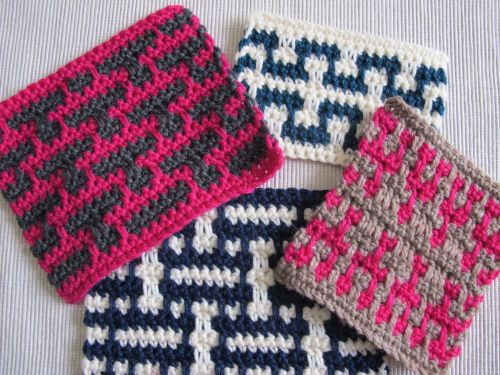Let’s continue to explore what happens to crochet fabric when you work stitches under one loop only! This time, we are going to have a look at the single crochet.
(You can find the tutorial about the default method of inserting your hook in a stitch by clicking this link, and the tutorial on double crochet through one loop only by clicking this one.)
We’ll start with single crochet through the front loop only, abbreviated as sc flo.
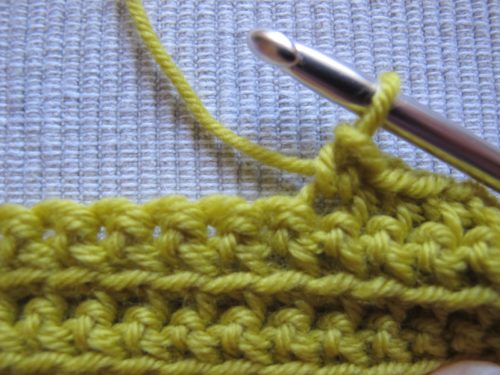
Here is our row as it presents itself to us – it’s not so easy to spot the different loops of each stitch!
I use my old trick, tilting the work towards me to see the top of the row.
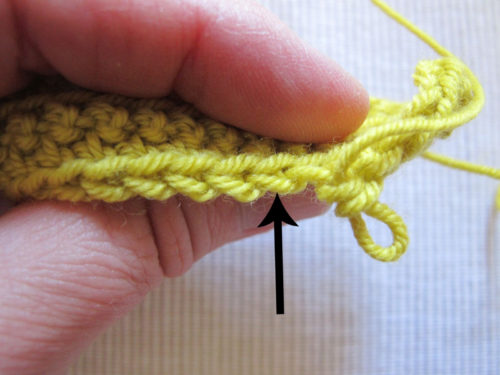
The top of each stitch looks like a V lying on its side. The front loop is the loop closest to me, as shown by the arrow in the photo.
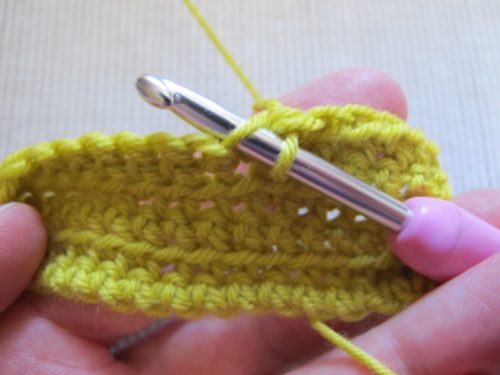
I insert my hook under the front loop only, and I make my single crochet as usual.
The only exception is the last stitch in each row, which I work through both loops to create a stable selvedge.
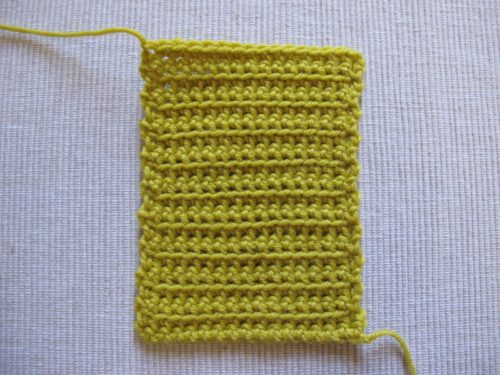
Here is the resulting fabric. It has a light horizontal texture due to the loops left unworked on the back of the swatch.
This stitch pattern is much drapier than sc worked through both loops. It would work very well for shawls and garments.
Let’s go on to the back loop! The abbreviation for the stitch is sc blo.
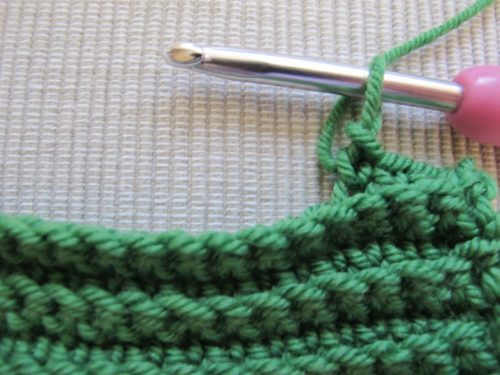
Here is the row as it faces us. As in the first picture above, you might note that the last stitch worked looks as though it sits above the row, stretching out the loop at its base. This is normal, because tension is still applied to this stitch. As you continue the row, everything will fall into place and the stitches will be well aligned.
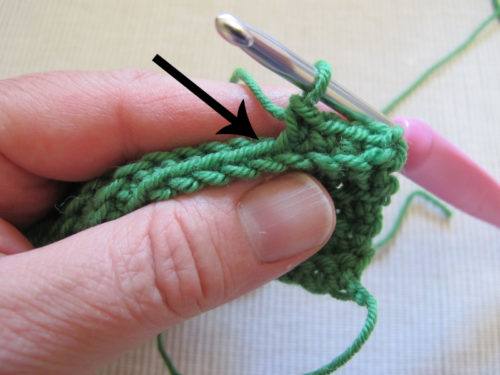
By tilting the work towards me, I can easily see the back loop (at the arrow).
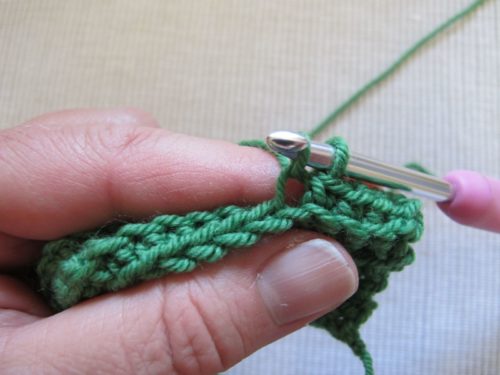
I insert my hook through the back loop only and complete my single crochet as usual.
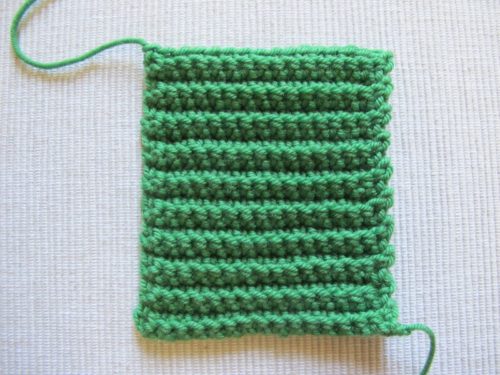
Here is the finished swatch. It has a lot of texture, with thick horizontal bars dominating the surface.
The fabric is much thicker than the one obtained previously, and very elastic. Sc blo works very well for ribbing or in other situations where you want to have good elasticity.
Both swatches were worked with the same yarn, the same hook and the same number of stitches and rows. Let’s put them side by side:
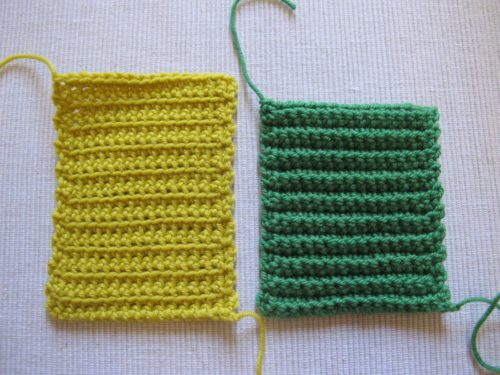
Yet another difference between the swatches jumps out: the swatch worked through the front loop only is much taller than the swatch worked through the back loop.
Working through the front loop only will render taller rows, and working through the back loop will compress the fabric vertically. This is something to keep in mind, especially if you want to combine both stitch patterns in the same project.
However, if you take this into account, the two stitch patterns can perfectly well be mixed, as they have been in the basketweave pattern in this swatch:

I have made a video about these two ways to work single crochet through one loop only.
I also wanted to show you a very special way to work sc through one loop only. With this technique, you get a double layer of sc. It is sometimes called thermal single crochet.
Here’s how it’s done.
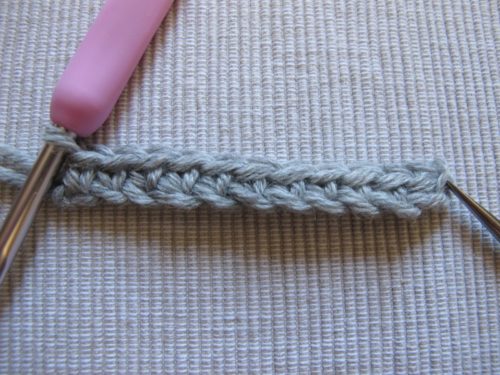
Start the first row as for a normal single crochet project worked flat. Here, I want to make a swatch that’s 12 stitches wide.
Ch 13, 1 sc in second ch from hook, 1 sc in each ch to end of row. There are 12 sc. Do not turn.
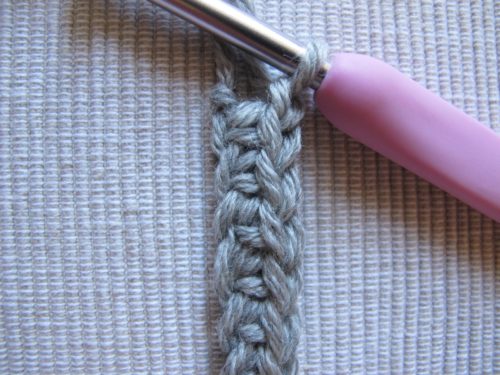
Ch 1. Pivot work 90 degrees. We are now going to work sc inserting the hook through one of the loops of the sc just made and through the remaining loop in the starting chain at the base of the same stitch.
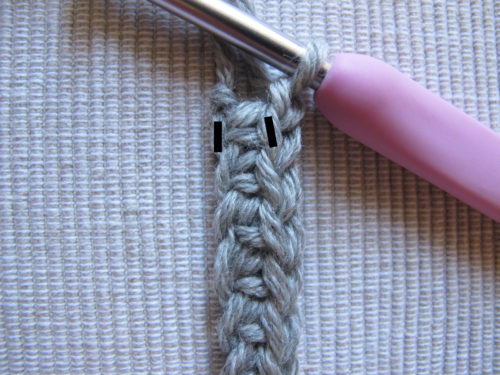
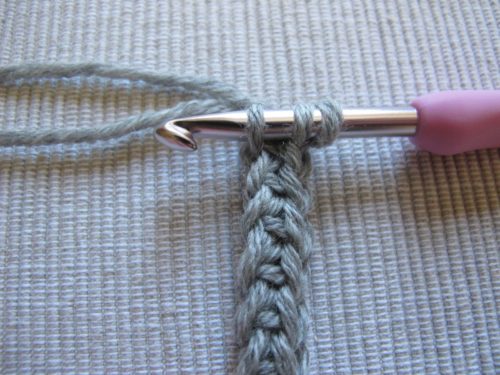
Insert the hook through both loops.
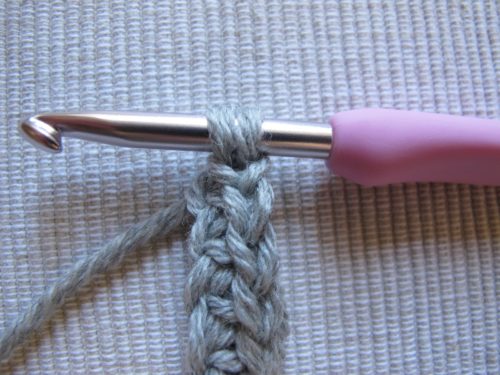
Pull up a loop.
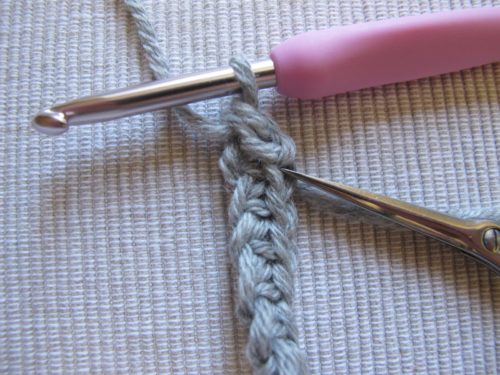
Complete the sc as usual.
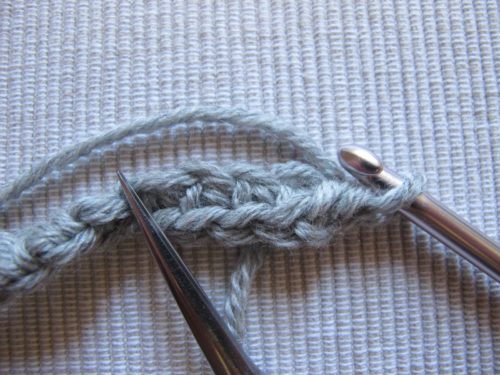
After the first stitch you might find it easier to pivot the work a little more to continue.
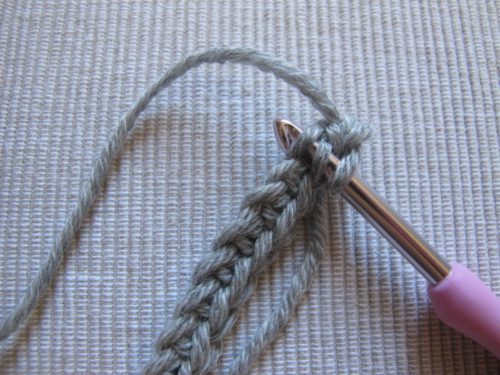
The loops you are looking for are placed directly facing each other. If you are not sure you have the right loops, count stitches and loops from the beginning of the row so as not to offset the work.
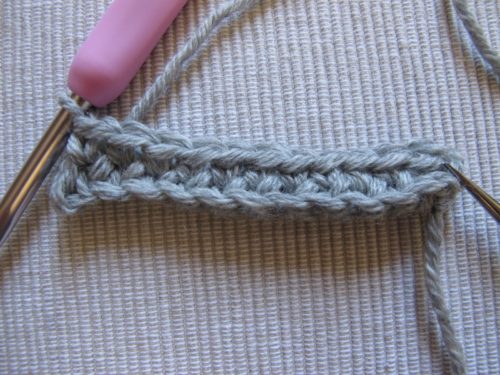
Here is the finished row.
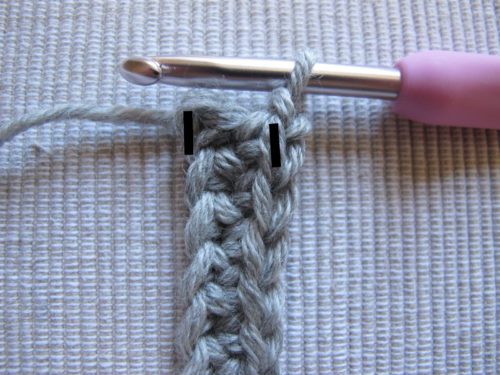
Ch 1. I will now insert my hook through the leftmost loop in the sc just made, and in the remaining loop in the corresponding stitch in the previous row.
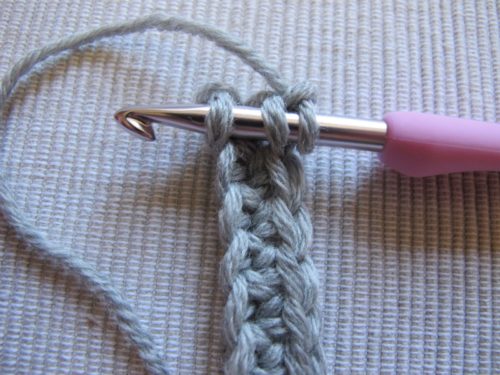
I’m set to work the first sc in the row. And that’s all there is to it! When you start, it’s easy to lose track at the beginning and end of the row – if you’re not sure, do count your loops to stay on track, and count your stitches at the end of each row.
To finish your work and avoid leaving a horizontal bar slightly beneath the top of the last row, work a row in slip stitches to “close” the work:
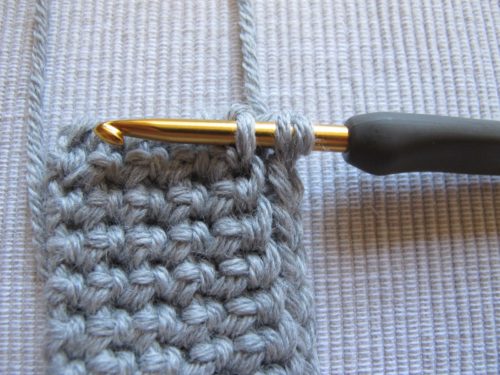
This time, you don’t need to chain at the beginning of the row. You can insert your hook directly through the loops (just as in the previous rows). To make a slip stitch, simply pull your yarn through all loops on the hook.
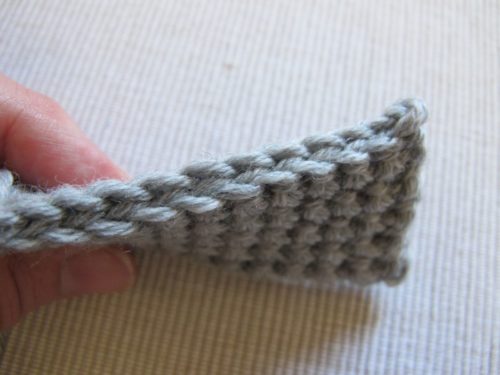
This is how it looks from above after this last row.
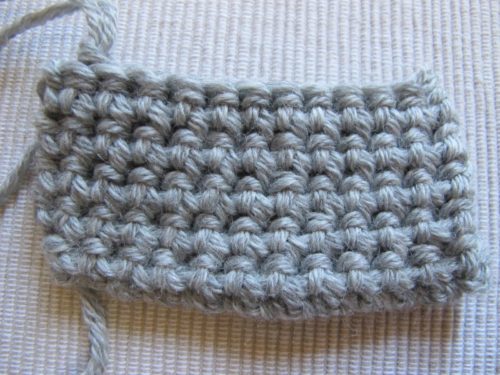
The fabric obtained is firm and thick, a double layer. In natural fibers such as wool or cotton, it has good insulation properties. It’s a great stitch pattern for potholders, or even as a hot pad if using a thicker yarn. I also think this would work great to make the sides of a rigid basket.
It’s a very specific, three-dimensional technique – I hope this video can be of help.
The humble single crochet definitely has more than one trick up its sleeve! Have you tried the techniques shown in this month’s tutorial? Or do you know another technique using sc through one loop only that you would like to share? Feel free to add to the comments below!
See you soon!


